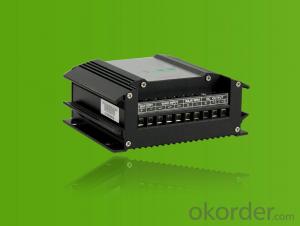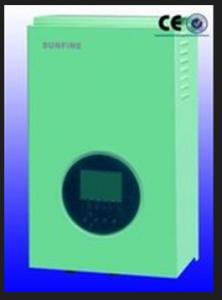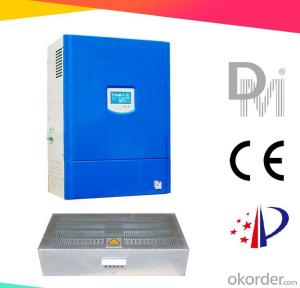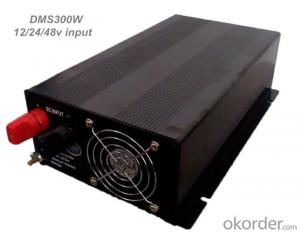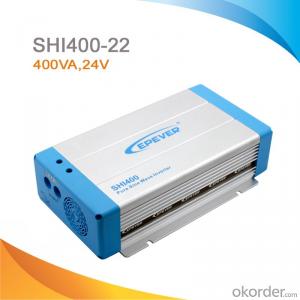Hybrid Solar Inverter 24v
Hybrid Solar Inverter 24v Related Searches
Canopy For Solar Inverter Awning For Solar Inverter Solar Inverter For Rv Inverter For Solar Quality Solar Inverter Best Solar Inverter In Kerala Top Solar Inverter In Pakistan Plug In Solar Inverter Solar Inverter In Pakistan Spd In Solar InverterHot Searches
Type Of Inverter For Solar Types Of Inverter For Solar Used Solar Inverter For Sale Inverter Size For Solar System Solar Edge Inverter For Sale 5kw Solar Inverter For Sale Solar Inverter For Sale Solar Inverter For Battery Solar Inverter For Split Ac Solar Inverter For Laptop Solar Inverter For Fridge Solar With Inverter Price Solar Inverter With 2 Battery Solar Inverter With Ac Outlet Solar Inverter Price In China Best Solar Inverter In China Solar Inverter Price In Dubai Solar Inverter Price In Uae Solar Inverter Price In Kenya Solar Inverter For FridgeHybrid Solar Inverter 24v Supplier & Manufacturer from China
Okorder.com is a professional Hybrid Solar Inverter 24v supplier & manufacturer, offers integrated one-stop services including real-time quoting and online cargo tracking. We are funded by CNBM Group, a Fortune 500 enterprise and the largest Hybrid Solar Inverter 24v firm in China.Hot Products
FAQ
- A centralized solar inverter system refers to a setup where multiple solar panels are connected to a single inverter. In this system, all the panels are connected in series, and the combined DC (direct current) power generated by the panels is converted into AC (alternating current) power by the centralized inverter. On the other hand, a decentralized solar inverter system, also known as microinverters or power optimizers, involves each solar panel having its own dedicated inverter. In this system, each panel operates independently, converting its DC power into AC power directly at the panel level. The main difference between the two systems lies in their architecture and the way power conversion occurs. In a centralized system, the entire array's power output is dependent on the performance of a single inverter. If any one panel in the array underperforms due to shading or malfunction, it can significantly impact the overall system's performance. Additionally, the use of a single inverter can create limitations in terms of design flexibility and system scalability. In a decentralized system, each panel operates independently, allowing for greater flexibility and optimization. The individual inverters in a decentralized system can maximize the power output of each panel, regardless of shading or performance variations. This also means that the overall system performance is less impacted by the underperformance of a single panel. Moreover, decentralized systems offer greater scalability as additional panels can be easily added without the need for significant system redesign. Decentralized systems also provide enhanced monitoring capabilities, as each inverter can provide real-time data on individual panel performance. This allows for easier troubleshooting, maintenance, and identification of any issues within the solar array. In summary, while a centralized solar inverter system is a simpler and more cost-effective option, a decentralized system offers better optimization, scalability, monitoring, and performance reliability. The choice between the two systems depends on factors such as system size, shading conditions, budget, and desired level of control and flexibility.
- Yes, a solar inverter can work in low light conditions. While the output power of a solar inverter may decrease in low light conditions, it is still capable of converting the available sunlight into usable electricity. The performance may vary depending on the specific model and technology used, but modern solar inverters are designed to work efficiently even in low light situations.
- The different power output modes of a solar inverter typically include grid-tie mode, off-grid mode, and hybrid mode. In grid-tie mode, the solar inverter synchronizes with the utility grid, allowing excess solar energy to be fed back into the grid. Off-grid mode, on the other hand, enables the solar inverter to operate independently, providing power to appliances and devices without the need for a utility grid connection. Hybrid mode combines the features of both grid-tie and off-grid modes, allowing the solar inverter to function with or without the grid, depending on the availability of solar energy and the user's preferences.
- The potential risks of over-discharging a battery connected to a solar inverter include reduced battery lifespan, decreased storage capacity, increased internal resistance, and potential damage to the battery cells. Over-discharging can lead to deep cycling, which can degrade the battery's performance and shorten its overall lifespan. It may also cause the battery to lose its ability to store energy efficiently, resulting in reduced storage capacity. Additionally, over-discharging can increase the internal resistance of the battery, leading to decreased efficiency and lower power output. In severe cases, over-discharging can cause irreversible damage to the battery cells, rendering them unusable and necessitating replacement.
- Yes, a solar inverter can be used in a stand-alone solar system. In fact, it is an essential component as it converts the direct current (DC) generated by the solar panels into usable alternating current (AC) for powering appliances and electronics. This allows the stand-alone solar system to meet the energy needs of off-grid locations or areas with limited access to the main power grid.
- The maximum temperature range for a solar inverter typically depends on the specific model and manufacturer. However, most solar inverters are designed to operate within a range of -20°C to 50°C (-4°F to 122°F).
- The role of a power monitoring feature in a solar inverter is to track and measure the amount of power generated by the solar panels. It provides real-time data on the energy production, allowing users to monitor the system's performance, identify any issues or inefficiencies, and optimize the overall energy output. This feature is crucial for ensuring the effective and efficient operation of a solar power system.










